- Solar System Exploration Data Services Office (690.1)
- Astrochemistry Laboratory (691)
- Planetary Systems Laboratory (693)
- Planetary Magnetospheres Laboratory (695)
- Planetary Geology, Geophysics, and
Geochemistry Laboratory (698) - Planetary Environments Laboratory (699)
Solar System Science Offices
Solar System Science Labs
- High Energy Astrophysics Science Archive Research Center Office (660.1)
- Office of Scientific Computing (660.2)
- Instrument Development Group (660.3)
- Astroparticle Physics (661)
- X-ray Astrophysics (662)
- Gravitational Astrophysics (663)
- Observational Cosmology (665)
- ExoPlanets and Stellar Astrophysics (667)
Astrophysics Science Offices
Astrophysics Science Labs
- Global Modeling and Assimilation Office (610.1)
- Global Change Data Center (610.2)
- Field Support Office (610.W)
- Goddard Institute for Space Studies (611)
Earth Sciences Offices
Earth Sciences Labs
Flight Instruments
Current Flight Instruments
Mars Organic Molecule Analyzer (MOMA)
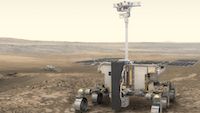
The European Space Agency's (ESA) ExoMars (Exobiology on Mars) Rover is scheduled to launch in the summer of 2020 and land on Mars nine months later.
The Planetary Environments Laboratory at Goddard Space Flight Center (GSFC) is developing the mass spectrometer and electronics subsystem of the Mars Organic Molecule Analyzer (MOMA) instrument on the 2020 ExoMars rover mission. MOMA is a dual-ion source linear ion trap mass spectrometer-based instrument that combines pyrolysis and derivatization GCMS with Mars ambient laser desorption mass spectrometry (LDMS). MOMA is led by the Max Planck Institute for Solar System Research in Germany (Dr. Fred Goesmann, PI).
Goesmann, F. et al. (2017) The Mars Organic Molecule Analyzer (MOMA) Instrument: Characterization of Organic Material in Martian Sediments. Astrobiology, 17, 655–686. doi: 10.1089/ast.2016.1551.
Sample Analysis At Mars (SAM)
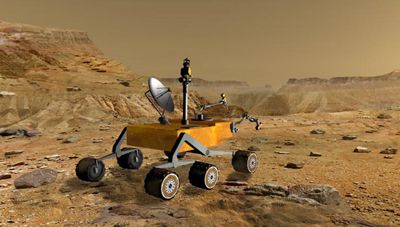
The Mars Science Laboratory (MSL) Curiosity is the largest, most massive, and most powerful rover ever sent to Mars Mars. Curiosity landed successfully on August 6, 2012.
The Planetary Environments Laboratory at Goddard Space Flight Center (GSFC) has contributed to the successful search for evidence of a habitable environment on Mars with the development, integration,
calibration, test, and ongoing operation of a suite of instruments; a mass spectrometer; a
gas chromatograph, and a tunable laser spectrometer. This suite of
instruments is called SAM (for Sample Analysis at Mars). 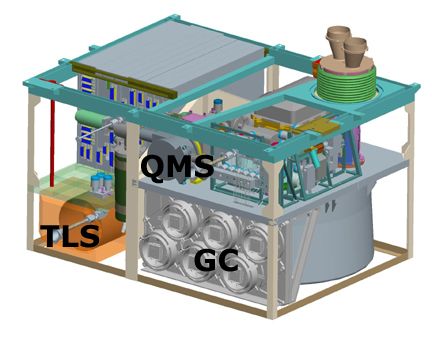 The gas
chromatograph mass spectrometer greatly extends the breadth of
measurements that were implemented on the Viking landers in 1977 and
the tunable laser spectrometer precisely measures trace species such as
methane. The combined set of composition and isotope measurements will
help us answer the questions of the present or past ability of Mars to
support life. SAM team members come not only from Goddard and other
NASA centers, but also from industry and universities in the United
States and from other countries including France and Mexico.
The gas
chromatograph mass spectrometer greatly extends the breadth of
measurements that were implemented on the Viking landers in 1977 and
the tunable laser spectrometer precisely measures trace species such as
methane. The combined set of composition and isotope measurements will
help us answer the questions of the present or past ability of Mars to
support life. SAM team members come not only from Goddard and other
NASA centers, but also from industry and universities in the United
States and from other countries including France and Mexico.
MAVEN Neutral Gas and Ion Mass Spectrometer (NGIMS)
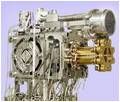
The Mars Atmosphere and Volatile Evolution Mission (MAVEN), set to launch in 2013, will explore the upper atmosphere of Mars, including its ionosphere and interactions with the sun and solar wind. Scientists will use MAVEN data to determine the role that loss of volatile compounds, such as CO2, NO2, and H2O, from the Mars atmosphere to space has played through time, giving insight into the history of the martian atmosphere and climate, liquid water, and planetary habitability.
The MAVEN project will be managed by GSFC. In addition to managing the project, GSFC will contribute two instruments, the Magnetometer (MAG) and the Neutral Gas and Ion Mass Spectrometer (NGIMS). The NGIMS will be provided by the Planetary Environments Laboraotry (699). It will measure the composition and isotopes of neutral ions. Learn more about Goddard's contributionts to MAVEN here.
LADEE Neutral Mass spectrometer (NMS)
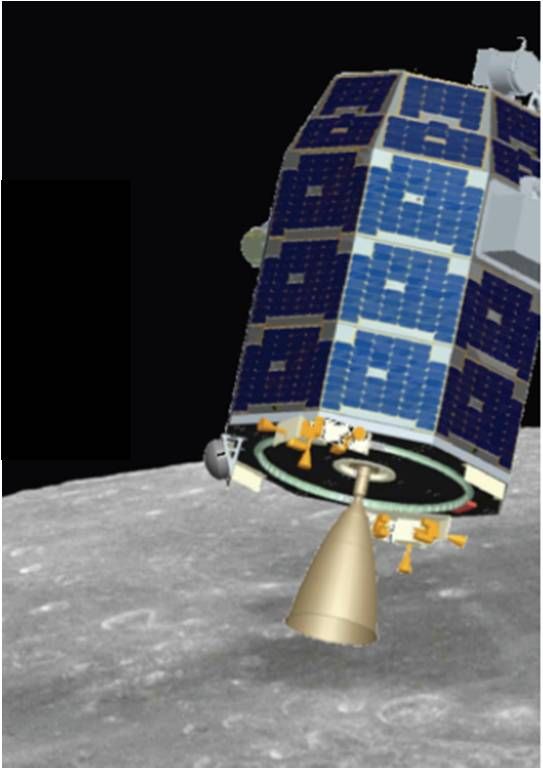
The Lunar Atmosphere and Dust Environment Explorer (LADEE) is designed to characterize the tenuous lunar atmosphere (exosphere) and dust environment from orbit. The scientific objectives of the mission are:
- Determine the global density, composition, and time variability of the fragile lunar atmosphere before it is perturbed by further human activity
- Determine the size, charge, and spatial distribution of electrostatically transported dust grains and assess their likely effects on lunar exploration and lunar-based astronomy
LADEE is expected to launch in early 2013 aboard a Minotaur V. The nominal science orbit will last 100 days. The orbiter will carry a neutral mass spectrometer (built by the Planetary Environments Laboratory), an ultraviolet/visible spectrometer, and a dust detector. The Neutral Mass Spectrometer (NMS) will detect and constrain the abundances of species expected to be prevalent at 50 km altitude. LADEE NMS will observe the spatial distribution and temporal variability of species which condense at nighttime and show peak concentrations at the dawn terminator, possible episodic release from the lunar interior, and the results of sputtering or desorption processes from the regolith. The NMS is a quadrupole mass spectrometer designed to detect or obtain new upper limits for species up to 150 amu and will look for He, Ar, CH4, S, Kr, Xe, Fe, Al, Mg, and OH. To date only He, Ar-40, K, Na, and Rn-222 have been firmly identified in the lunar exosphere.



